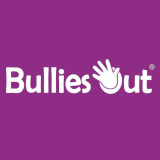This informal CPD article Should Government be doing more to involve diverse voices in their policy making? was provided by Linda James, Founder and CEO of BulliesOut, one of the UK’s most dedicated and ambitious anti-bullying charities.
Having recently returned home to Wales after spending the last few years working for the New Zealand Government, one thing that’s struck me is the different way governments in the UK approach involving the public in their policy making. What I’d learnt to be good practice seems suspiciously absent in my home nation.
In the UK, public consultations usually involve a lengthy consultation document, a generic response form and some meetings with a select group of ‘usual suspect’ stakeholders. I’d argue that, to many, this seems little more than a ‘tick-box’ exercise, fulfilling government’s obligations whilst minimising the chance of any genuine feedback.
In recent years, other countries have shifted away from this traditional approach, recognising that effective policy making relies on enabling those affected to participate in its development in a meaningful way. A greater emphasis is placed on community engagement. The intention is to develop solutions to complex issues that stand up to the realities of the ‘real world’, are responsive to people’s needs and experiences, and therefore far more likely to achieve their intended outcomes.
For this to work, leaders must be prepared to challenge their preconceptions and make alterations based on what the public is telling them. Whilst confronting, there is a widespread acknowledgement that it is central to inclusive, transparent and effective government.
Whilst in New Zealand, I was involved in a national educational reform programme. From the outset, there was an acknowledgement from within the organisation that it has historically been good at telling the sector what to do, but not so good at listening.
To change this narrative, our consultation was designed to facilitate conversations with as many people with experience of the system as possible. We knew that a generic response form, with predetermined questions would likely only solicit a response from the usual suspects. So we simply asked people to share their experiences – the challenges, successes, what they like, and what we can do better.
We tried to create inclusive opportunities to make contribution accessible for everyone. We partnered with influencers, community groups and iwi (Māori tribal groups) to help us reach communities that have traditionally been marginalised from similar processes. We held student competitions, reddit AMAs and parliamentary debates and between students and MPs and co-design events which brought together people from across the education spectrum to share their perspectives and collaborate on potential solutions.
16,000 people responded, over 4000 were young people. This was just one project in a national education reform programme which received a total of 43,000 submissions. The result was an announcement of a series of policy changes that received unprecedented public and cross-party support. We were able to show our working, and directly trace the changes we were making back to what the public had told us.
In comparison, the Curriculum for Wales’s consultation received 1,680 contributions, 423 from young people but it is not uncommon to receive a fraction of this number. Achieving real change that addresses historical inequities relies on the buy-in from those who have not previously been included in these decisions. As a participant at one of our co-design events put it, ‘anyone not part of the conversation is unlikely to be sold on the solution’.
After a pandemic that has exposed the inequalities faced by many in our society – can we do more to capture diverse voices to help solve the UKs toughest social issues?
We hope this article was helpful. For more information from BulliesOut, please visit their CPD Member Directory page. Alternatively please visit the CPD Industry Hubs for more CPD articles, courses and events relevant to your Continuing Professional Development requirements.













